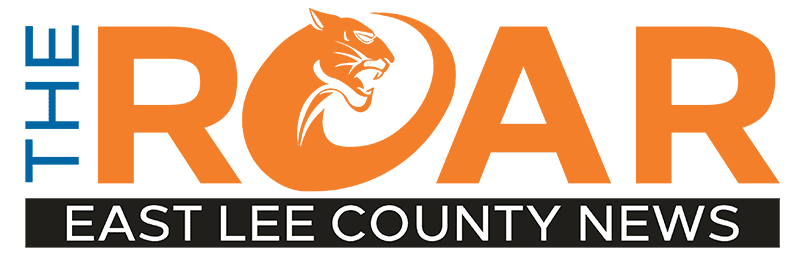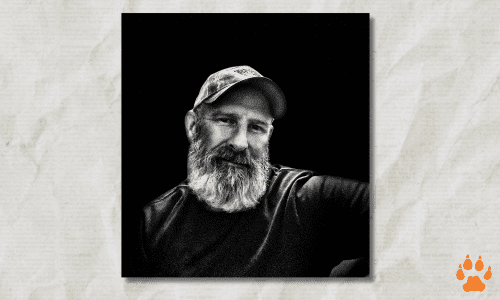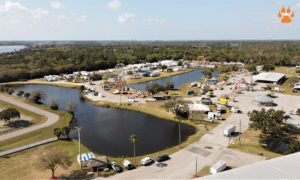By: James Kennedy | East Lee County News
In the May 2025 edition, I wrote about the importance of growing what matters here in East Lee County—our land, our local food, and the legacy that makes this place different from anywhere else in Florida. Since then, the conversations haven’t stopped.
From Alva to Olga to Buckingham, folks are asking the same question: Is there anything we can do besides sell to developers?
There’s a rising sense that if we want to keep what’s left of rural Lee County—if we want our kids and grandkids to grow up with clean rivers, cattle pastures, and the space to run and ride—we’ve got to act. And not just resist—we need to get creative.
This isn’t about stopping growth. It’s about protecting what makes us us. And thankfully, there are real, working alternatives for landowners who want to do right by their property and their community.
1. Water Farming: Help the River, Keep Your Land
The Caloosahatchee has taken a beating, but landowners can be part of the solution. The South Florida Water Management District now pays people to hold water on their land through the Dispersed Water Management Program. It reduces runoff, protects water quality, and creates a new income stream—all without concrete or condos.
It’s the kind of win-win that reminds us: solutions don’t always come from the top down. Sometimes they come from your own back forty.
Visit: https://www.sfwmd.gov/our-work/water-storage-strategies
2. Wildlife-Friendly Stewardship: Make Room for Tortoises, Get Paid
Florida’s gopher tortoise program rewards landowners who agree to serve as recipient sites for this keystone species. These properties stay wild—scrub, pasture, or pine flatwoods—and in return, you get paid for preserving habitat that supports biodiversity.
It’s not just about saving tortoises. It’s about keeping your land open and ecologically valuable while holding onto what’s yours.
Visit: https://myfwc.com/license/wildlife/gopher-tortoise-permits/recipient-sites
More: eastleewildlife.com/contact
3. Rethink Agriculture: More than Citrus and Cows
We need to expand our thinking about what agriculture looks like. Across Florida, people are turning small plots into profitable ventures—gourmet mushrooms, medicinal herbs, bamboo, heritage poultry. These aren’t boutique fads. They’re real businesses, and they keep land in family hands.
Landowners can lease parcels to beginning farmers, start small ag enterprises, or tap into university programs that offer support every step of the way.
Start with:
- UF/IFAS Lee County: https://sfyl.ifas.ufl.edu/lee/
- USDA NRCS: https://www.nrcs.usda.gov
- USDA FSA: https://www.fsa.usda.gov/
4. Agritourism & Equestrian Life: Invite Folks In, Keep Your Land Out of a Binder
We’ve got history here. Cattle drives, cracker houses, backroad watermelon stands. What if we celebrated that?
Florida law supports agritourism, and many landowners are turning their acreage into destinations: farm-to-table dinners, U-pick fields, ranch tours, even equestrian boarding and clinics.
Not only do these ventures generate revenue, they reinforce rural identity—and help folks fall in love with what we’re fighting to keep.
Get started:
- Florida Agritourism: https://www.followfreshfromflorida.com
- Lee County VCB: www.leevcb.com
5. Transfer of Development Rights (TDR): Sell Density, Keep Dirt
One of the most effective and underutilized tools for land conservation and smart growth is the Transfer of Development Rights (TDR) program. It allows landowners to sell the right to build on their property—often rural or environmentally sensitive land—to developers who want to increase density in areas more suited for growth.
The result? The landowner gets compensated, the buyer gets to build more elsewhere, and the original land remains permanently protected.
Visit: https://www.leegov.com/dcd/planning/tdr
6. Easements, Trusts & Community Preservation
Land doesn’t have to be lost to be protected. You can preserve it yourself through conservation easements, land trusts, or programs like Florida Forever and Conservation 20/20. These tools let you pass on your land’s character—and sometimes its value—without surrendering it to the bulldozers.
You can also explore adopt-an-acre programs or community land trusts that keep land local, sacred, and intact.
Resources:
- Conservation 20/20: https://www.leegov.com/parks/conservation2020
- Florida Forever: https://floridadep.gov/lands/environmental-services/content/florida-forever
- Alachua Conservation Trust (as a model): https://www.alachuaconservationtrust.org/
What We Can Do Now—Not Someday
We don’t have to wait for Washington or Tallahassee. The tools are in reach—but they mean nothing if we don’t pick them up.
Here are four things we can do this year:
- Host a Rural Stewardship Summit – Bring together landowners, agencies, nonprofits, and experts to put real solutions on the table.
- Launch a Community Land Stewardship Task Force – Connect neighbors to resources that fit their land and goals.
- Start a Farm Incubator or Agritourism Pilot – Let one success story inspire a dozen more.
- Advocate for smarter zoning and local incentives – Expand Conservation 20/20, explore TDRs, and reward stewardship.
Join Us: Build a Future That’s Worth Driving Through
Imagine this: your grandkids driving down North River Road, waving at cows and horses, not cranes and concrete. A river that runs clearer, not browner. A region where rural still means something.
We don’t have to imagine it—we just have to work for it. And we can.
Need help? Got ideas? Want to get involved?
Email: press@eastleenews.com
Call: 239-470-5611
Let’s grow what matters. Let’s keep it growing into the future.








